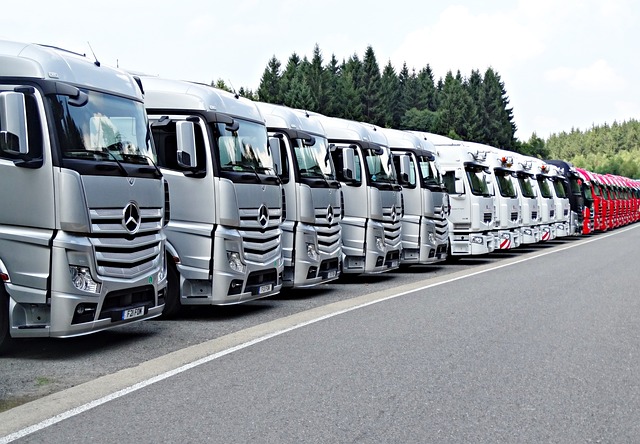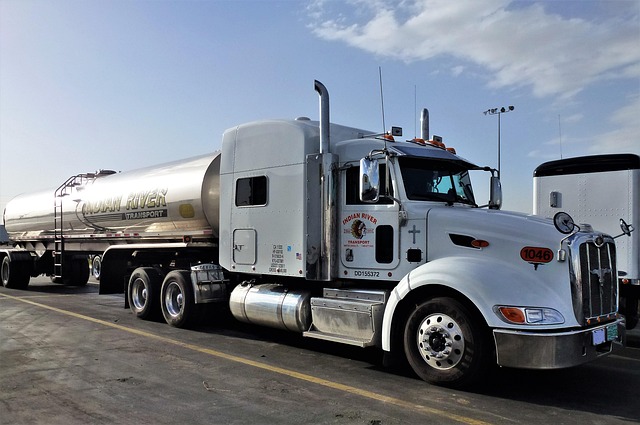Looking to register your car in California? This comprehensive guide walks you through the process, from understanding essential requirements to optional online registration. First, grasp the need for a DMV VIN verifier to ensure compliance with state laws. Next, gather vital documents, visit or contact the DMV, and verify your vehicle’s unique identification number (VIN). Complete the registration, obtain license plates, and even consider online registration for added convenience.
- Understand California Car Registration Requirements
- Gather Necessary Documents for Car Registration
- Visit or Contact the DMV for Vehicle Registration
- Verify VIN and Complete Registration Process
- Obtain License Plate and Register Vehicle Online (Optional)
Understand California Car Registration Requirements

Before registering your car in California, it’s crucial to understand the state’s specific requirements for vehicle registration. The California Department of Motor Vehicles (DMV) mandates that all vehicles operated within the state must be properly registered and have a valid inspection certificate. This process involves verifying the Vehicle Identification Number (VIN) of your car, which is a unique code that identifies specific features and characteristics of the vehicle.
One efficient way to ensure compliance with these requirements is through a mobile VIN verification service. These services allow for a quick and convenient vin inspection right from your location. By utilizing advanced technology, a mobile vin verifier can cross-reference your car’s VIN with state databases to confirm its authenticity and historical maintenance records, making the registration process smoother and more efficient for both you and the DMV.
Gather Necessary Documents for Car Registration

Before you start the registration process, make sure to gather all the essential documents required by the California Department of Motor Vehicles (DMV). This includes your vehicle’s title, which is crucial for establishing ownership. Additionally, you’ll need proof of insurance and a valid driver’s license or identification card. The DMV also mandates a Vehicle Identification Number (VIN) verification, so have your car’s VIN readily available. Consider using a mobile VIN verifier to ensure the vehicle’s history is clean and free from any discrepancies.
Another important document is the purchase agreement or sales receipt, especially if you’ve recently bought the car. This proves that you are the legal owner and can provide proof of transaction. By having these documents prepared, you’ll streamline the registration process and avoid unnecessary delays at the DMV.
Visit or Contact the DMV for Vehicle Registration

To begin the process of registering your car in California, visit or contact the Department of Motor Vehicles (DMV). The DMV is responsible for handling vehicle registration and title services within the state. Upon reaching out to them, you can schedule an appointment for a variety of services, including vehicle registration, license plate issuance, and even a VIN (Vehicle Identification Number) verifier for your car’s inspection. This step ensures that your vehicle meets all legal requirements before hitting the road.
A key part of this process involves a thorough VIN inspection to verify the authenticity and history of your vehicle. You can opt for traditional methods or leverage modern solutions like mobile vin verification services, which offer convenience and efficiency by allowing you to complete the inspection from almost anywhere. This digital approach simplifies what was once a cumbersome task, making it easier for both residents and visitors to register their cars in California.
Verify VIN and Complete Registration Process

After confirming your vehicle’s eligibility for registration, it’s crucial to verify its Vehicle Identification Number (VIN) using a reliable dmv vin verifier. This step is essential as it ensures the accuracy of your vehicle’s information and helps prevent fraud. Many online tools and mobile vin verification apps are readily available, making the process convenient. Simply input your VIN, and these services will provide detailed specifications about your car’s make, model, year, and even help identify any potential issues.
Once you’ve verified the VIN, it’s time to complete the registration process with the California Department of Motor Vehicles (DMV). Gather all necessary documents, including proof of ownership, vehicle inspection (if required), and identification. You can either visit a local DMV office or utilize their online services for a seamless experience.
Obtain License Plate and Register Vehicle Online (Optional)

If you prefer a faster, more convenient option, you can register your vehicle and obtain license plates online using the California DMV’s digital services. Before you begin, ensure you have your Vehicle Identification Number (VIN) verifier handy – this unique 17-character code is located on your vehicle’s registration label or in its owner’s manual. Utilize the DMV’s official website to access their online registration system. Here, you can submit your application, verify your VIN with a mobile vin inspection or through a third-party service, and pay the necessary fees digitally.
This method streamlines the process, eliminating the need for visits to the local DMV office. Plus, it allows for more flexibility – register your car from the comfort of your home or while you’re on the go using a mobile vin verification service. This digital approach is not only efficient but also promotes environmental friendliness by reducing paperwork and in-person transactions.
Registering a car in California involves understanding key requirements, gathering essential documents, and completing a straightforward process through the DMV or online. By verifying your vehicle’s VIN and ensuring all necessary paperwork is in order, you can efficiently get your car registered. Remember to keep your registration up-to-date and use a trusted DMV vin verifier for peace of mind on California’s roads.
